When choosing the best paint for a decorating project, what should you look for? Our experts, who have years of painting and decorating experience, are always available to give the latest product recommendations.
To help you learn how to paint tiles like kitchen floor tiles in the quickest, most effective painting techniques possible, they have put together this helpful guide to the best tile paint and how precisely to use it with or without primer.
Are Tiles Paintable?
At Painters World, we are frequently asked if we can paint tiles. It’s straightforward. Yes, you can.

Kitchens, bathrooms, and other areas around the house use tiles made of ceramic, porcelain, and other materials that, with the right preparation, can be painted.
Due to their extremely glossy texture, which can make it challenging for the paint to cling, tiles are renowned for being tough-to-treat surfaces. Contrary to popular belief, this is comparable to materials like metal, another surface that may be painted.
The drawback of painting tiles is that it is not a permanent fix. The only effective technique to get a long-lasting finish is to redo the tiling fully.
This is because the paint on any surface will deteriorate over time, especially on surfaces like tiles that are more prone to damage.
A multi-surface paint specifically designed to be applied to various surfaces, such as metal, plastic, wood, masonry, and UPVC, can be used to paint tiles.
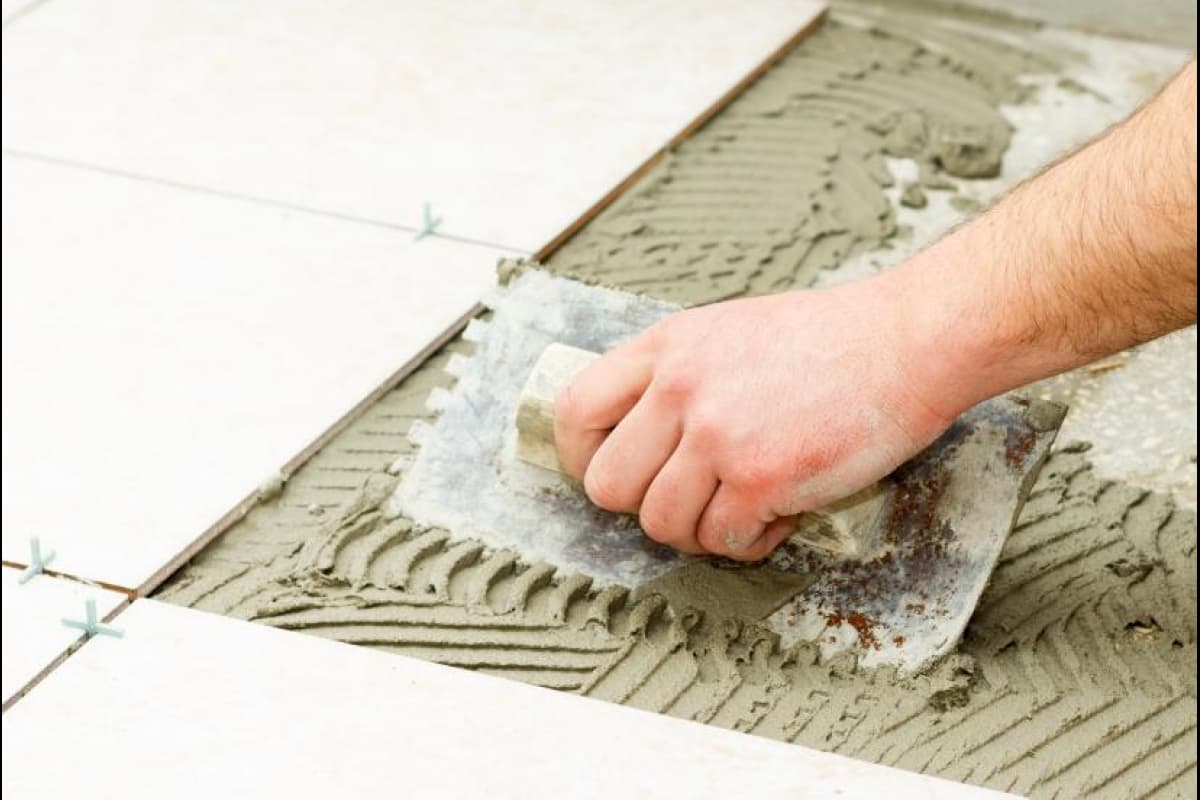
Paint Kitchen Floor Tiles
Here are the key benefits and drawbacks you should think about if you aren’t sure about painting tiles somewhere like your kitchen floor:
It is less expensive to paint tiles than replacement.
Painting causes little disturbance, whereas replacing them could lead to problems.
You may get whatever look you want with paint because it comes in various colors and finishes.
Tile grouting will be covered by painting unless you also paint this.
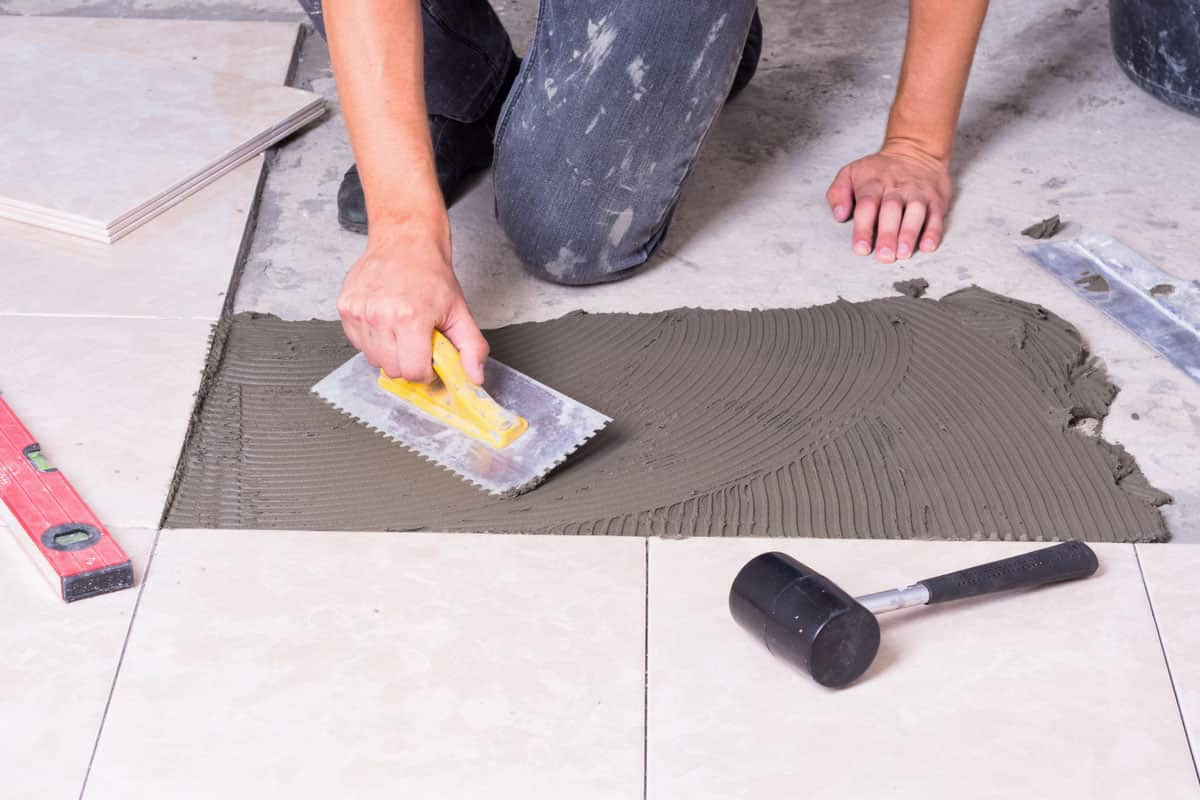
Paint on difficult-to-treat surfaces won’t last as long as on other surfaces, but you can maximize this longevity by applying the paint appropriately.
Use specialized paint that can be used on any surface, preferably tiles.
What is the ideal tile paint?
The next step is to pick the best paint for the job if you have carefully examined whether painting tiles is the best choice.
Many people want to paint floor tiles, even though the bulk of tiles are found on walls in rooms like bathrooms and kitchens. Because of this, we’ll start by discussing the best paint for wall tiles before moving on to the best paint for floor tiles.
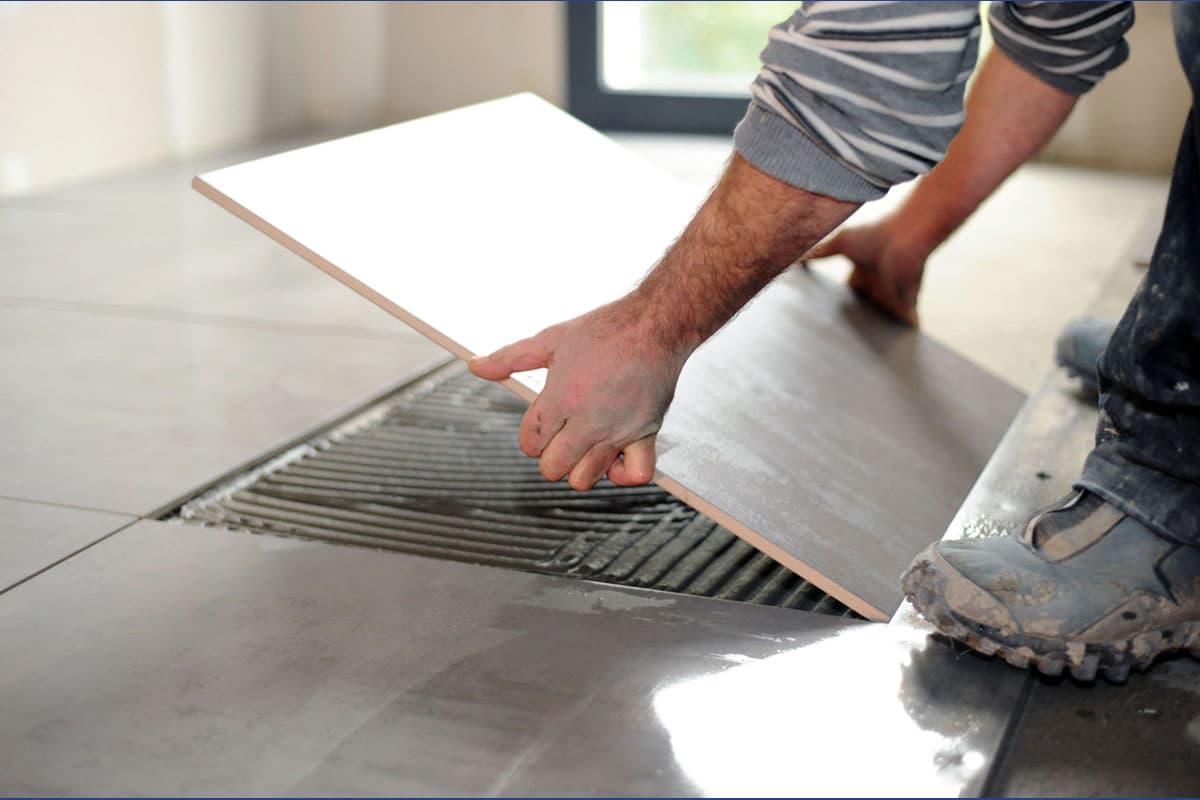
Primer to Paint Kitchen Floor Tiles
To increase the general adhesion of the paint when painting tiles on your kitchen floor, you must first apply a primer to the tile.
A primer coats the tile, making it much easier for the paint to adhere to the surface. This facilitates painting and also lengthens the paint’s shelf life.
But what kind of primer is best for use with wall tiles? Our experts highly recommend Zinsser Bullseye 1-2-3, a water-based universal interior primer that sticks well to any surface, especially shiny surfaces like tiles.
It is ideal for use in high-humidity environments like bathrooms and kitchens since it dries quickly, has a minimal odor, and contains a biocide that guards primed surfaces against fungus.
Your ceramic or porcelain tiles will be flawlessly prepared with just one application of Zinsser Bullseye 1-2-3, ready for painting.

Paint
You will need paint to cover the priming once you have it. As we’ve already indicated, it’s crucial to paint tiles with multi-surface paint. A standard interior emulsion paint will not provide the finest results when it comes to glossy tiles.
Numerous tile paints are easily accessible at big DIY stores all across the UK. Many of these paints fall under the category of “retail paints.”
Many large manufacturers produce two versions of their paints, trade paint, and retail paint. Retail paint is typical of lower quality, less long-lasting, and is geared toward particular applications, such as tile paints or bathroom and kitchen paints.
In actuality, these are just emulsion or multi-surface paints that function less well than their trade counterparts. Although there are less expensive tile paints available, we advise using the highest quality paint you can find to get the greatest results.
Cheaper paint often represents a false economy because it will wear out much more quickly than high-quality paint, costing you more money and time in the long run. Making a mistake the first time costs you time and money.

One product is wildly popular, and for a good reason, when it comes to multi-surface paint. A multi-surface paint with all the features you could want is Zinsser Allcoat. First of all, it has a 15-year lifespan and is very durable.
Additionally, it provides great resistance to cracking or flaking and is more than capable of withstanding the bathroom’s humidity thanks to its weather resistance. Despite being an outside product, it can still be used indoors.
It has increased durability because it is made to survive the weathering that an outside paint must. Overall, it is your best chance to have painted porcelain or ceramic tiles that will last a long time.
Zinsser Allcoat is also recommended because of its superb flexibility in terms of the appearance you can create.
It comes in matte, satin, and gloss finishes. The quantity of “sheen,” or the amount of light they reflect, varies among these finishes.
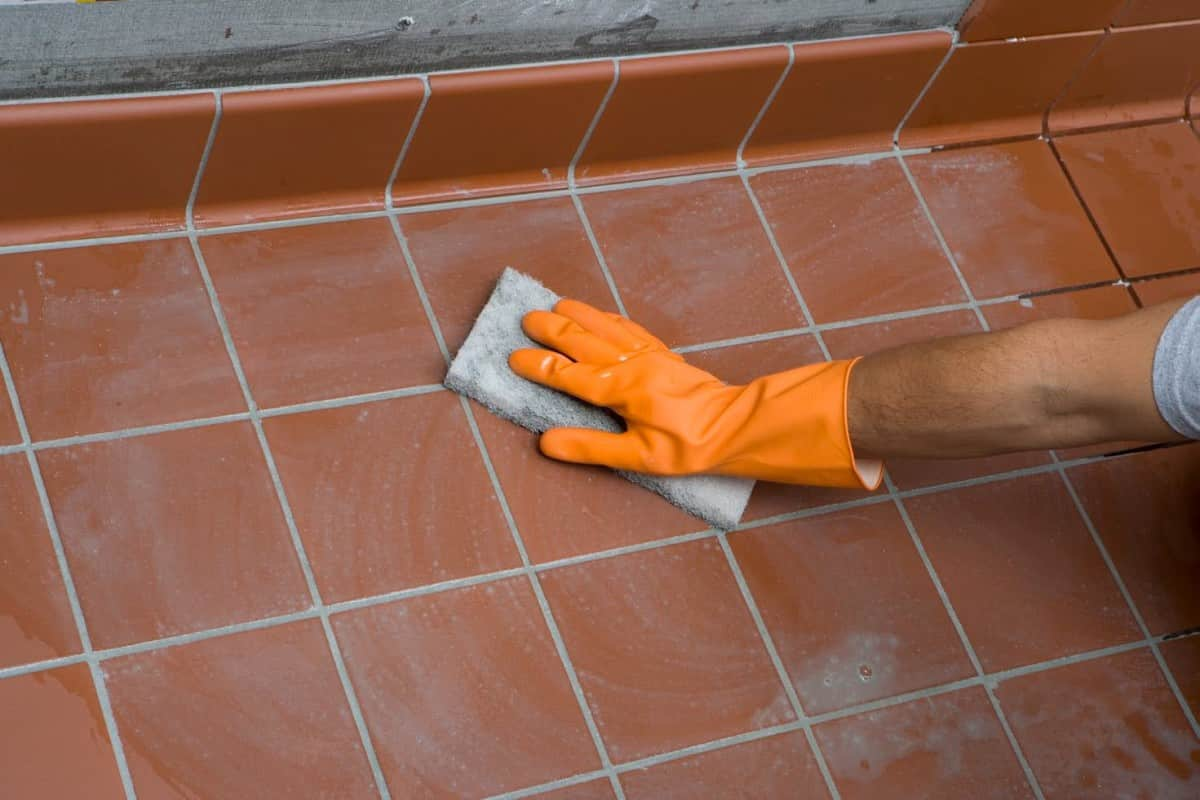
Matt is the most common, flat finish with the least gloss. Perfect for a contemporary look, particularly when used in dark grey, black, or vibrant colors like pink or orange
Satin is a high-gloss finish that can provide tiles with an excellent amount of sheen wherever they are used.
Gloss is a conventional tile finish that can provide the appearance of additional light and space in a room.
Finally, Painters World offers a paint mixing service that allows Zinsser Allcoat to be combined into whatever color you desire.
This gives you the freedom to choose any color you want when painting tiles, something you cannot do when re-tiling.
This comprises shades from nearly all paint manufacturers, including designer shades, that are equivalent to RAL, British Standard, and NCS colors. If you know its name, you can purchase a specific hue in Zinsser Allcoat.
Zinsser Allcoat is the ideal paint for painting wall tiles in bathrooms or kitchens.
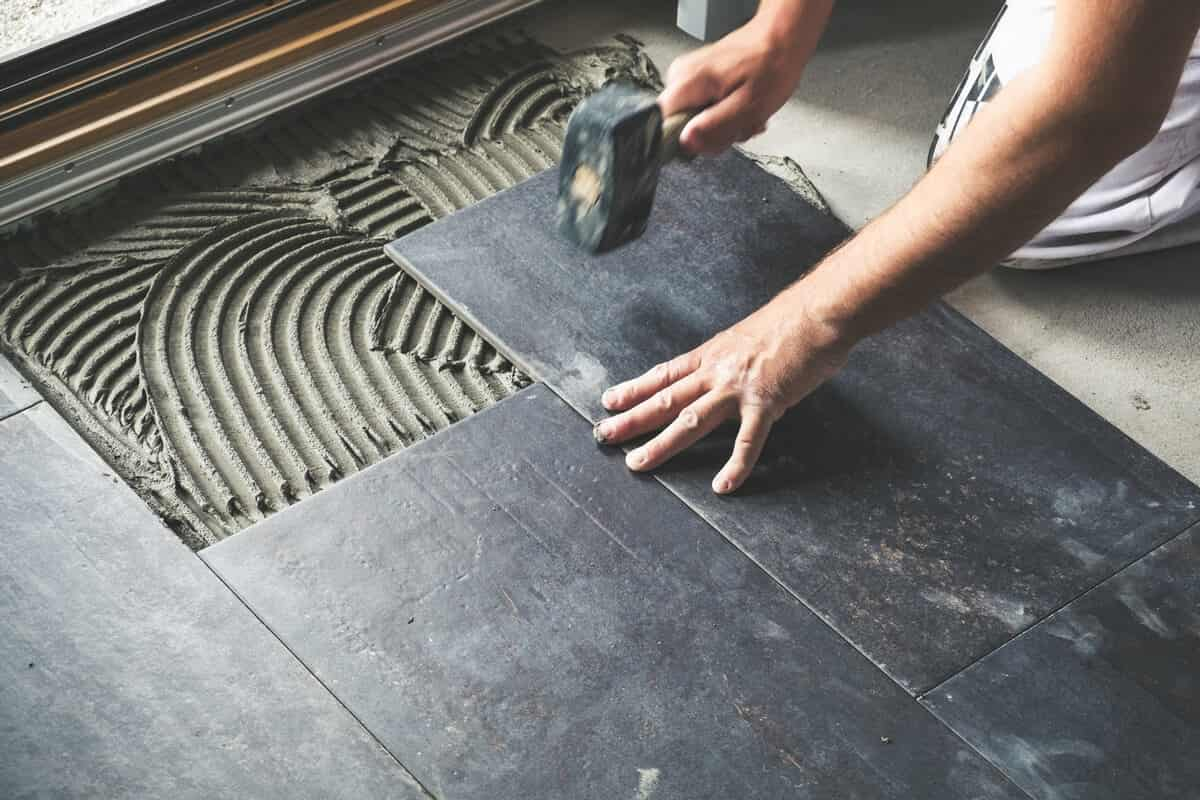
Kitchen Floor Tiles Painting Techniques
It’s time to start painting your kitchen floor tiles after you know which paint to use.
Make sure you don’t miss any steps in our experts’ step-by-step guidance and techniques because they are all essential to long-lasting benefits.
Get ready
Any expert decorator will tell you that preparation is one of the most crucial steps in any decorating project. Painting tiles is especially crucial because they do not arrive pre-painted as interior walls do.
Making sure the tiles are clean should be the first step. The paint will not adhere adequately to dirty or dusty tiles if you don’t clean them before painting.
You can accomplish this by using a cloth and a universal cleanser and degreaser like Zinsser Universal Degreaser & Cleaner.
Make sure there isn’t any leftover debris. This step is essential if you paint floor tiles because they are prone to accumulating grease over time.
To attain a faultless finish, you must ensure the surface is sound. If necessary, repair any cracks with an inside filler or inspect the grouting to determine whether it has to be redone.
It is advised to try to correct this now before painting in order to prevent having to repaint the tiles in the future.
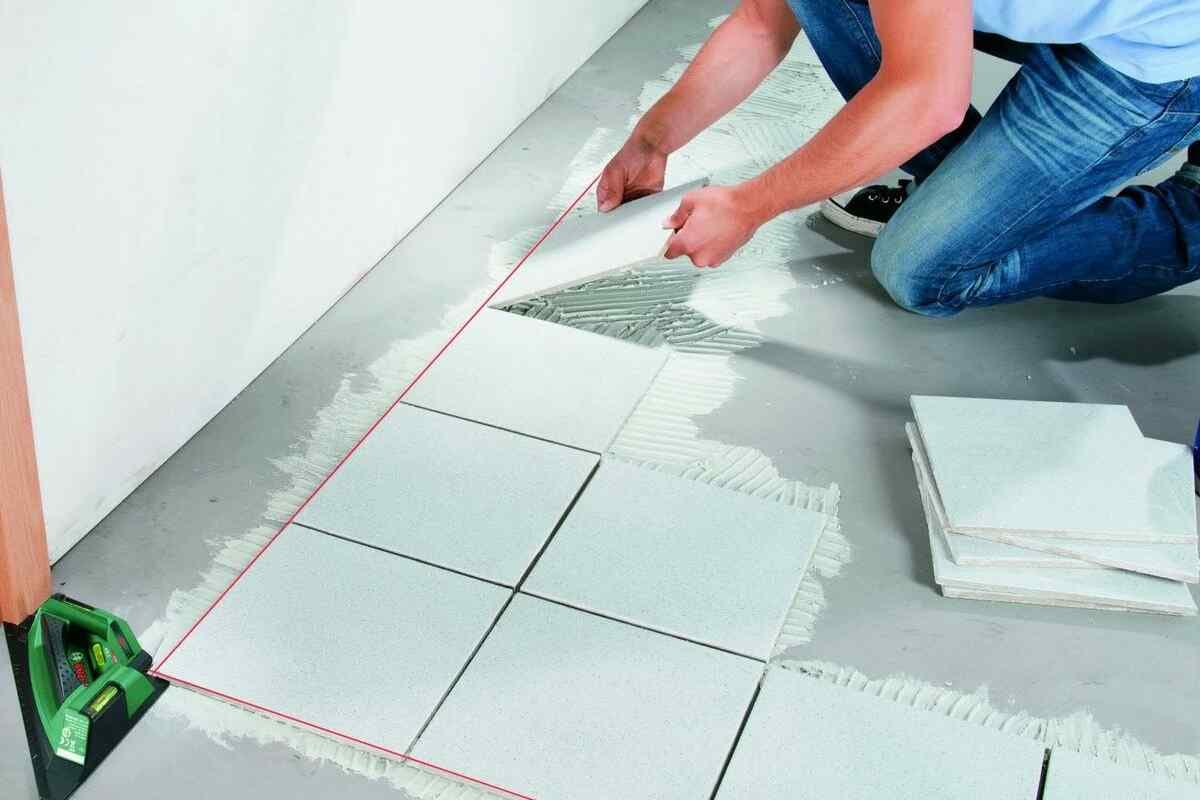
You can then sand the tiles to make a “key” for the paint to attach to, but only on wall tiles.
This produces a somewhat rougher surface, making it simpler to apply paint to the surface without running it off.
Give the tiles a light sanding with 120 grit sandpaper before wiping them down with water and a cloth to remove any remaining dust.
Mask the area using masking tape as the last step to get the cleanest finish possible. A high-quality masking tape will stop any paint from bleeding through, giving you incredibly sharp lines.
priming
The tiles should now be primed. Because they are so thin, primers are simple to apply using a brush or roller.
It takes only one coat, which also makes it a rapid job—using a paintbrush at the edges first, prime most of the tiles with a mini-roller.
Be careful to give it at least one to two hours to dry before painting.
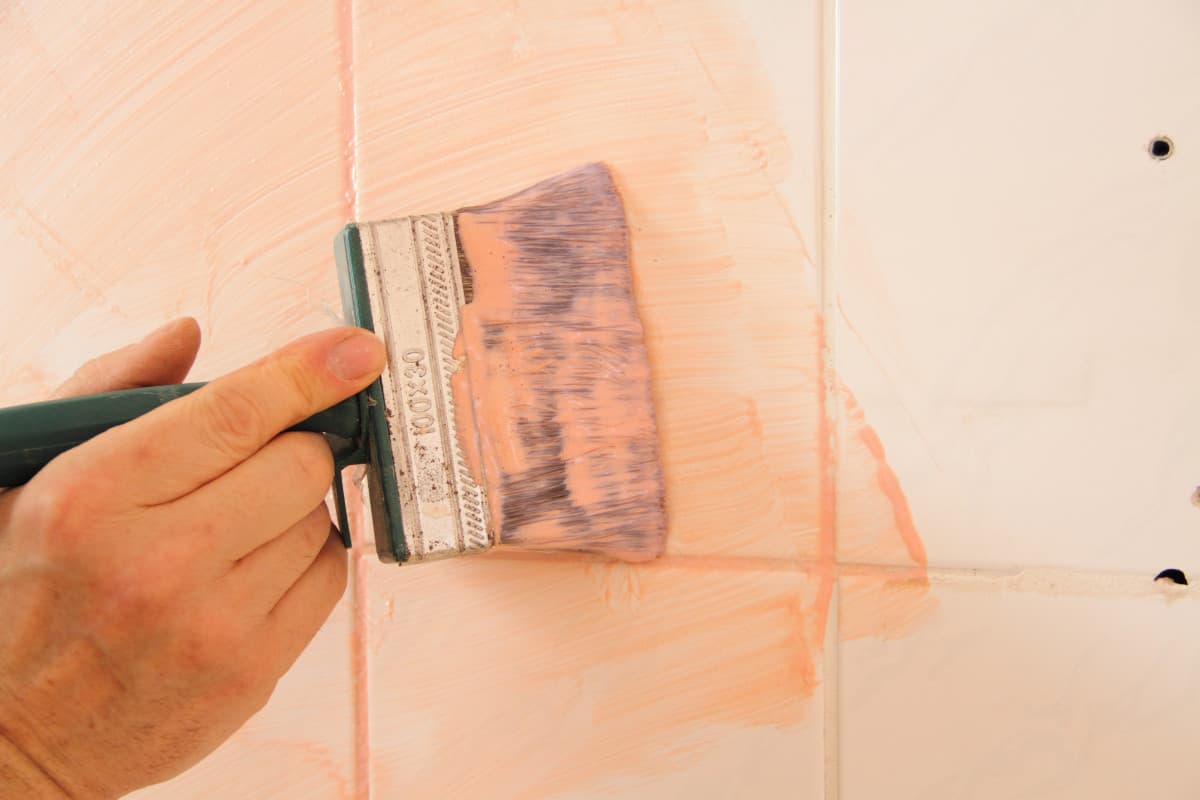
How to Paint Kitchen Floor Tiles
Now comes the crucial portion: how to paint. You must use a synthetic paint brush using Zinsser Allcoat, a water-based paint, as natural bristles can absorb water.
A natural bristle paint brush is advised when painting kitchen floor tiles with the solvent-based Rust-Oleum Floorcoat 7200.
Using high-quality decorating equipment is highly advised because the result is significantly superior.
As you do not need to cover a huge area, a compact, maneuverable roller, such as a mini-roller, works best for painting tiles. A short-pile roller sleeve also leaves the most uniform finish, making it the best choice for smooth surfaces.
We advise pairing the 4″ Hamilton Perfection Short Pile Roller with the 4″ Hamilton Prestige Mini Frame.
Start by painting the edges with your first coat using your paintbrush. This first layer should be a little bit thinner than your second coat since it creates a solid base for the topcoat to be applied to.
The first coat of paint that is overapplied will result in an undesirable finish.
The remainder of the surface can then be painted with a roller, being sure to get as near as you can to the edge.
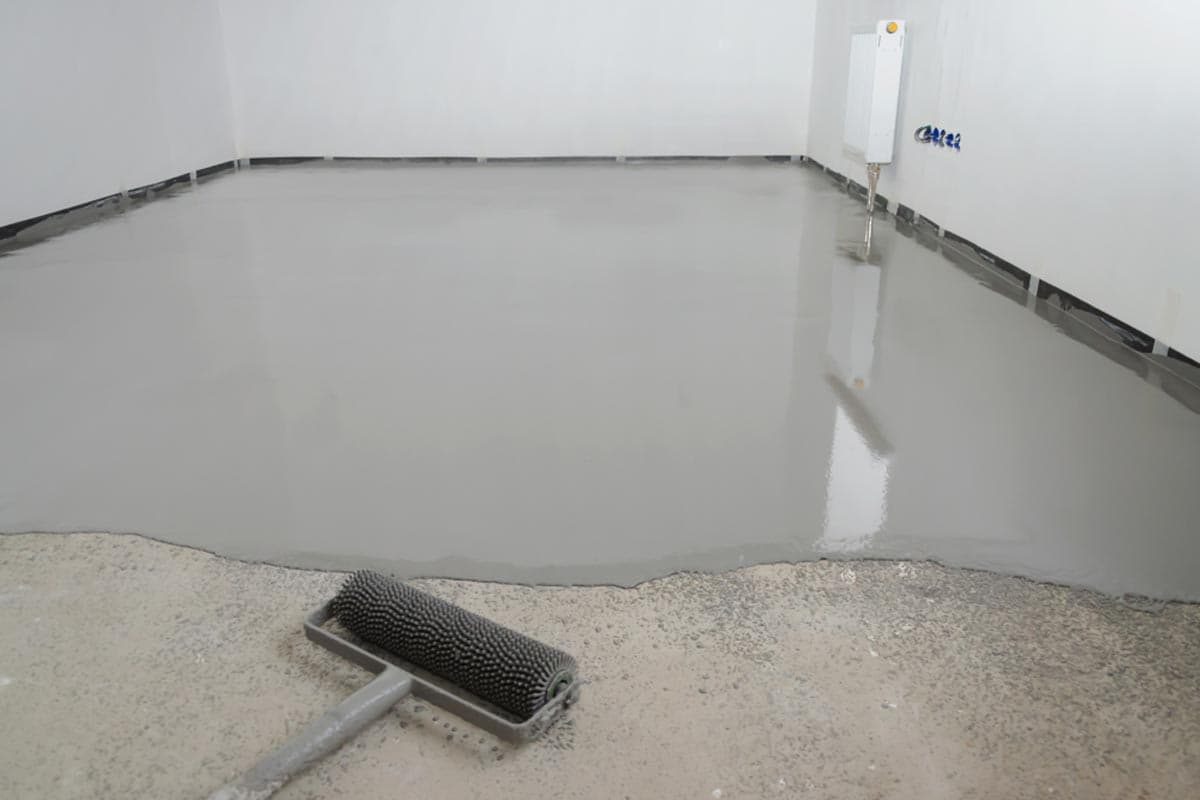
This avoids what is known as the “framing effect,” which happens when a paintbrush is used to paint the surface’s exterior.
If you don’t cover these brush strokes with a mini-roller of paint, you will have two distinct finishes.
Repeat the technique with a second coat that is a little thicker, allowing it to dry completely before doing so.
When the grout is entirely dried, you might paint it a complementary color, like black, to give it a stunning appearance that would really stand out.
Inspiration for Painting Tiles
Are you looking for some inspiration before attempting to paint your ceramic bathroom, kitchen, or floor tiles? Here are just a few of our favorite picks.
When it comes to painting tiles, there are endless alternatives. This painted bathroom ceramic tile example is the ideal demonstration of what I mean.
The tiles are completely highlighted by using a black accent line and a delicate pink tint. It is entirely distinct, has personality, and is creative.

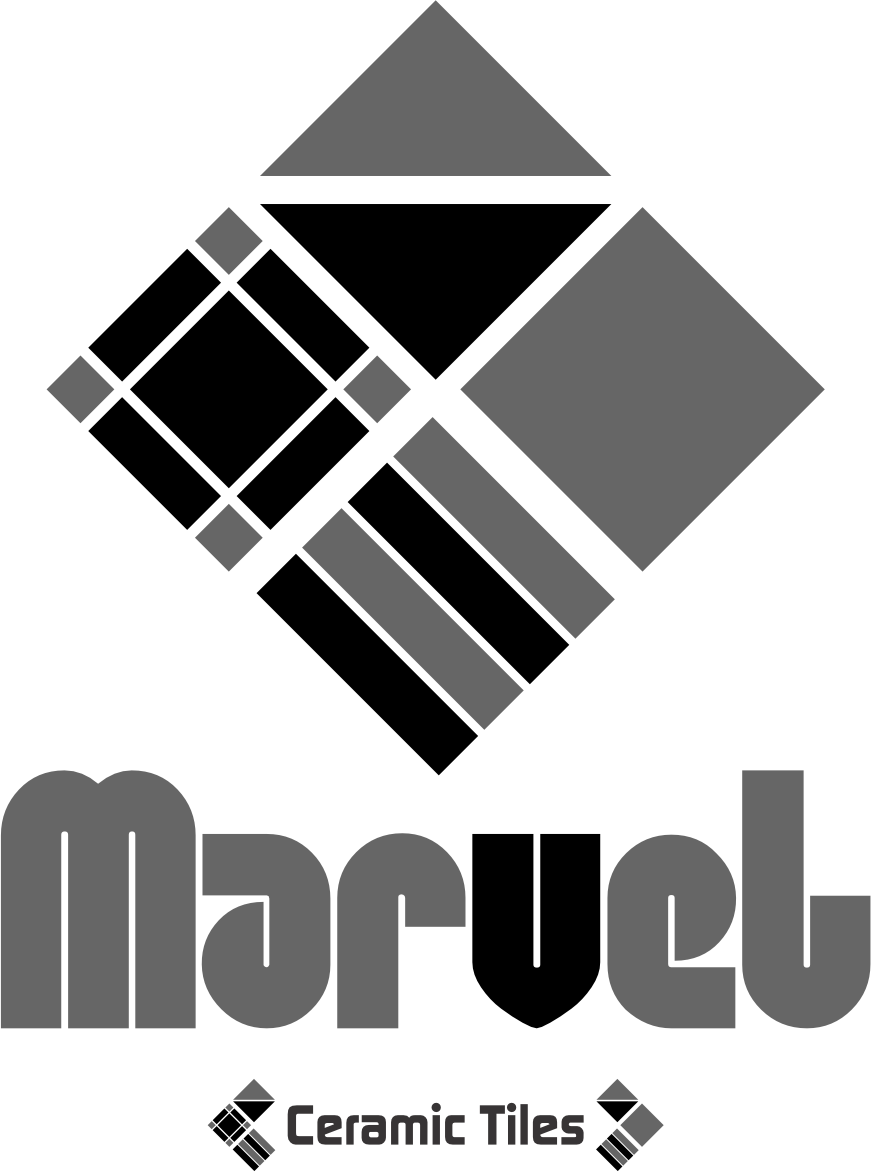
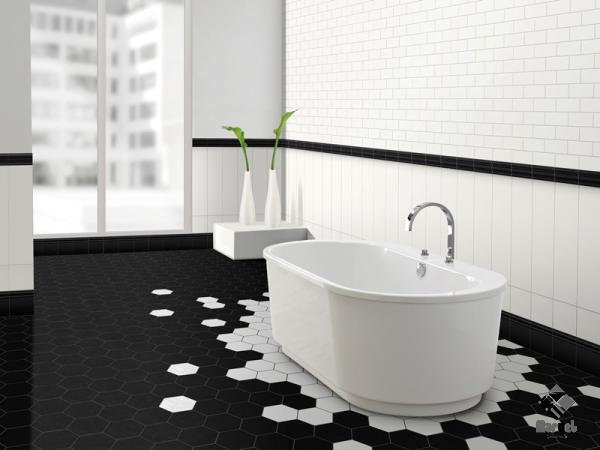
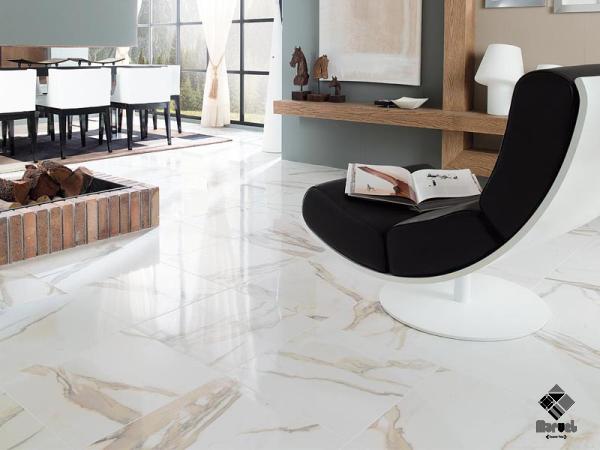


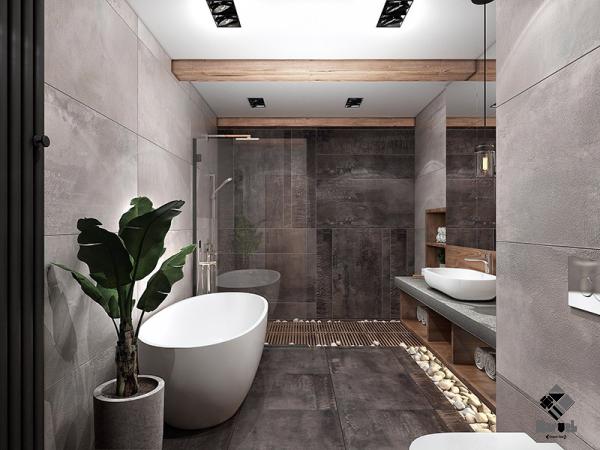
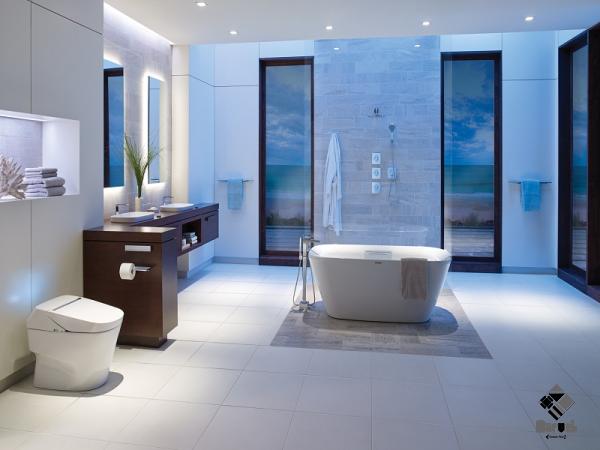
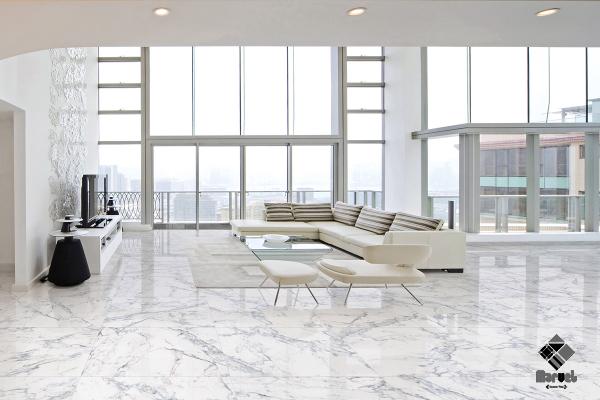
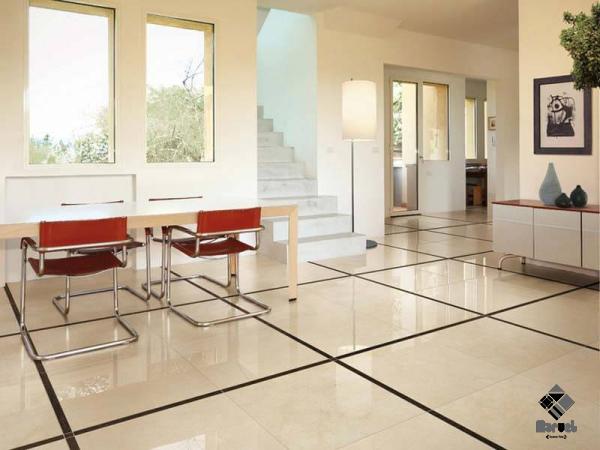
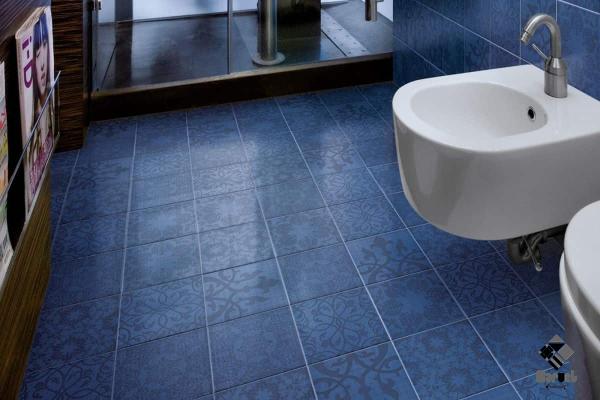
Your comment submitted.